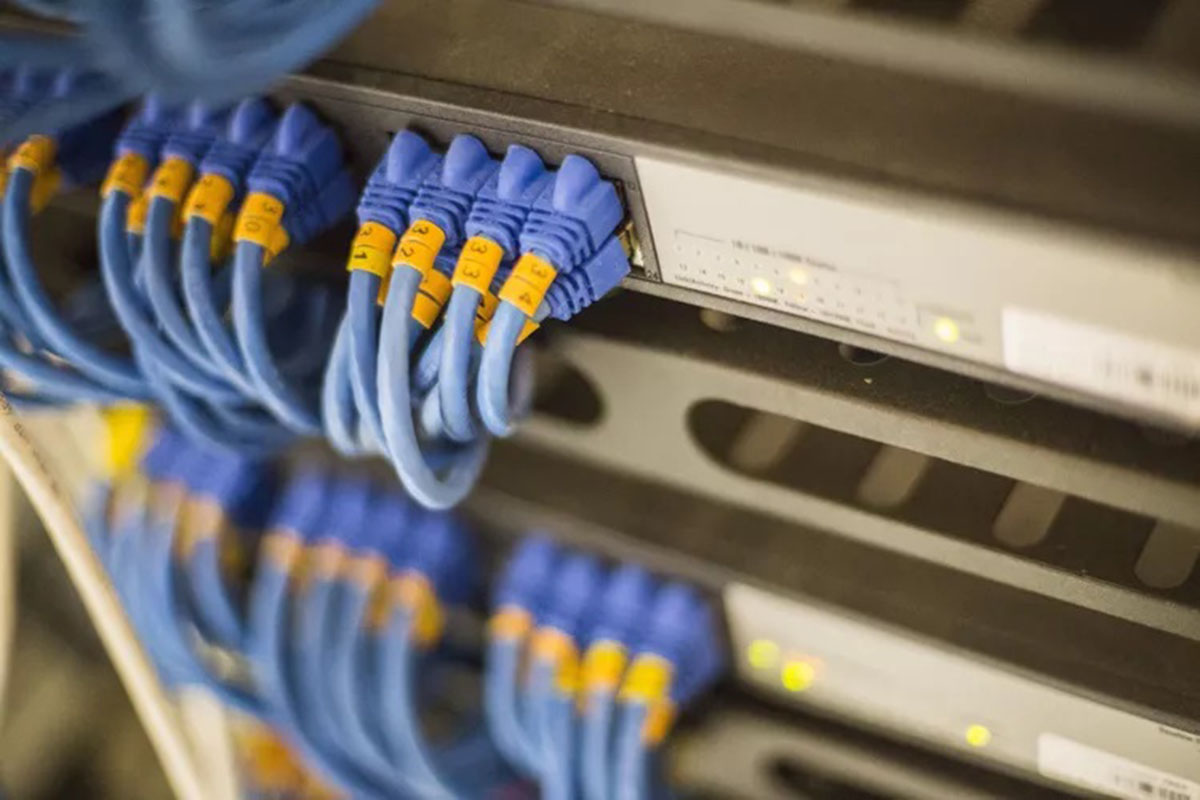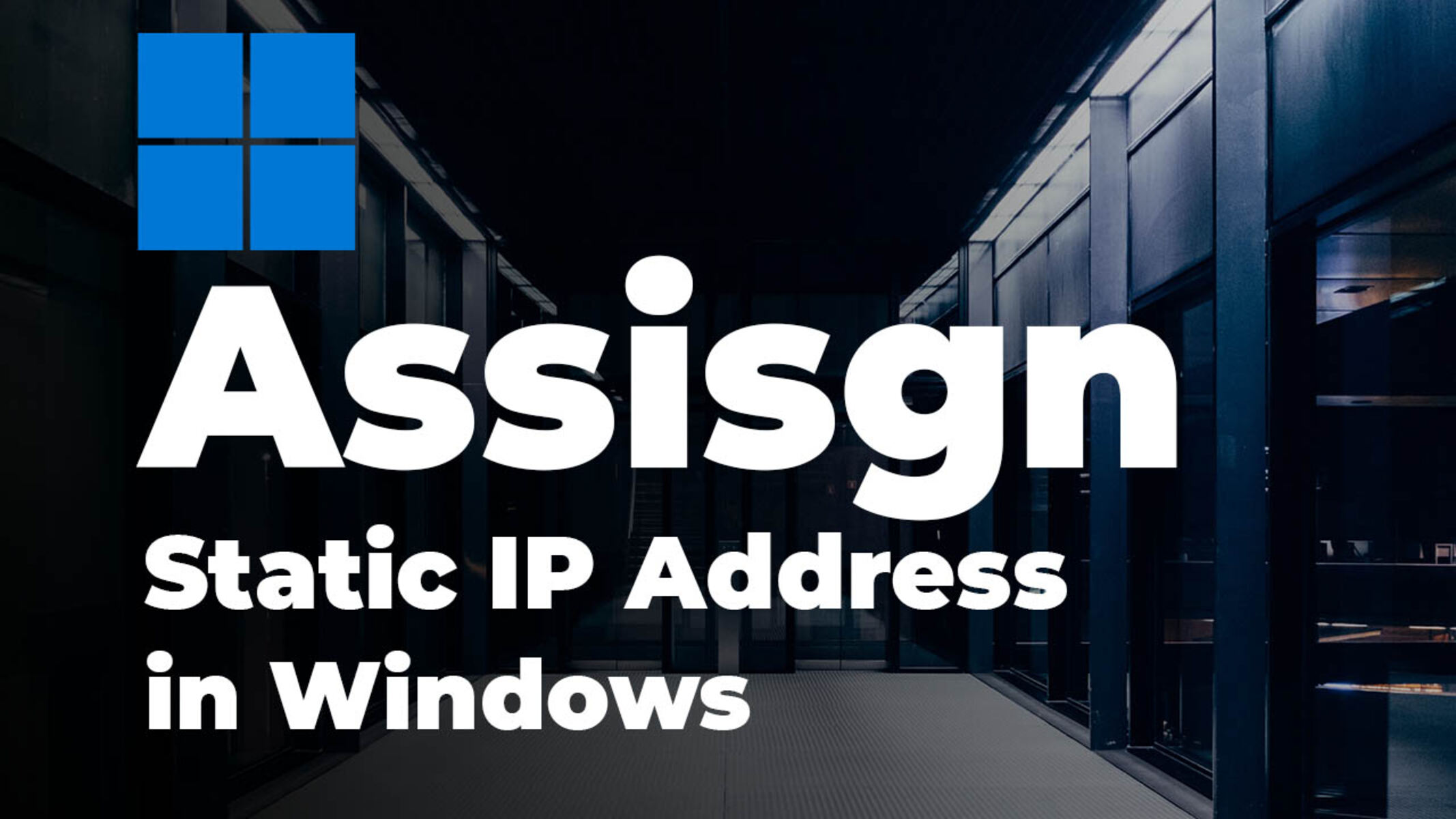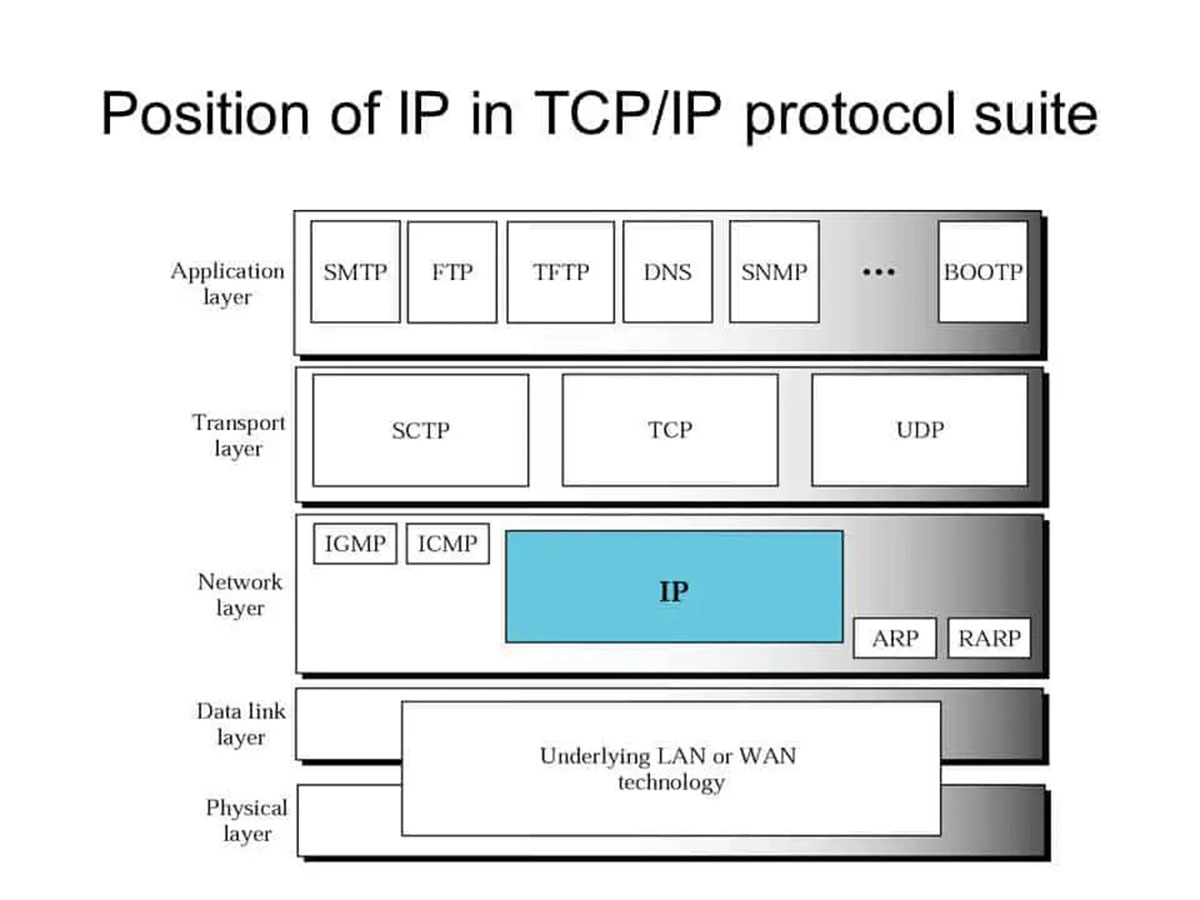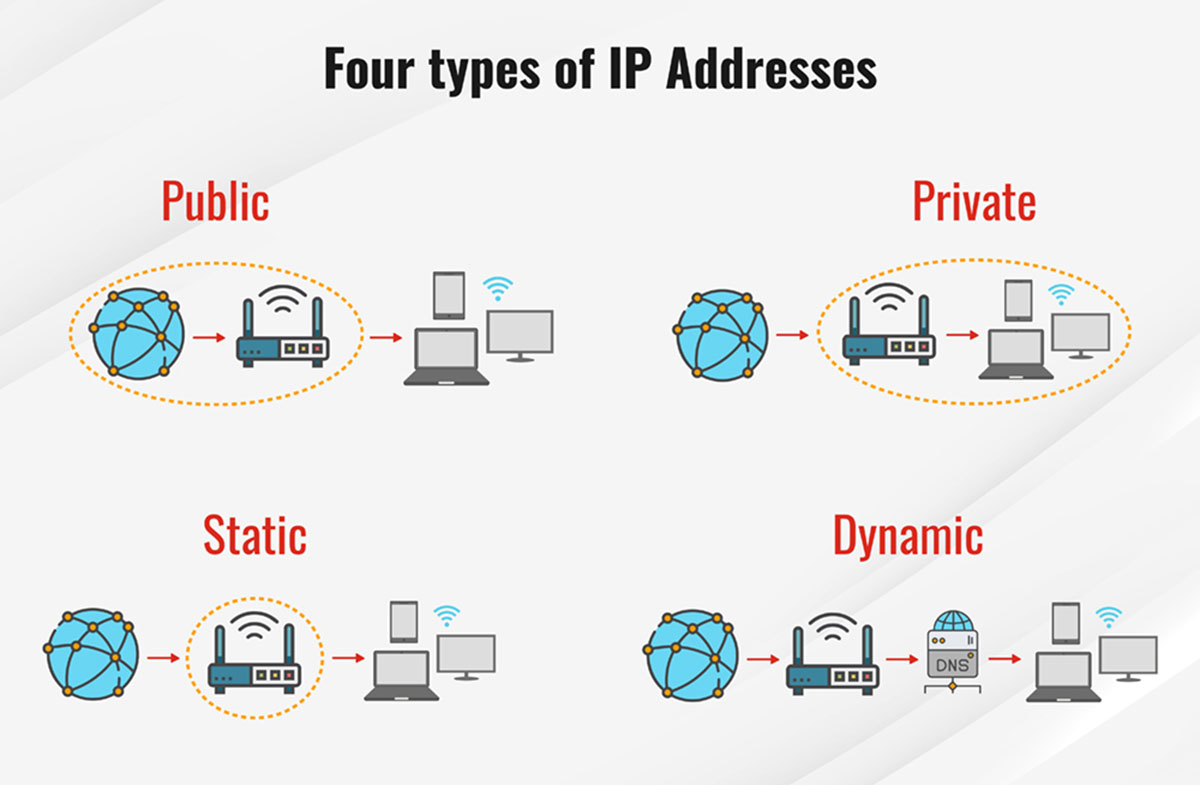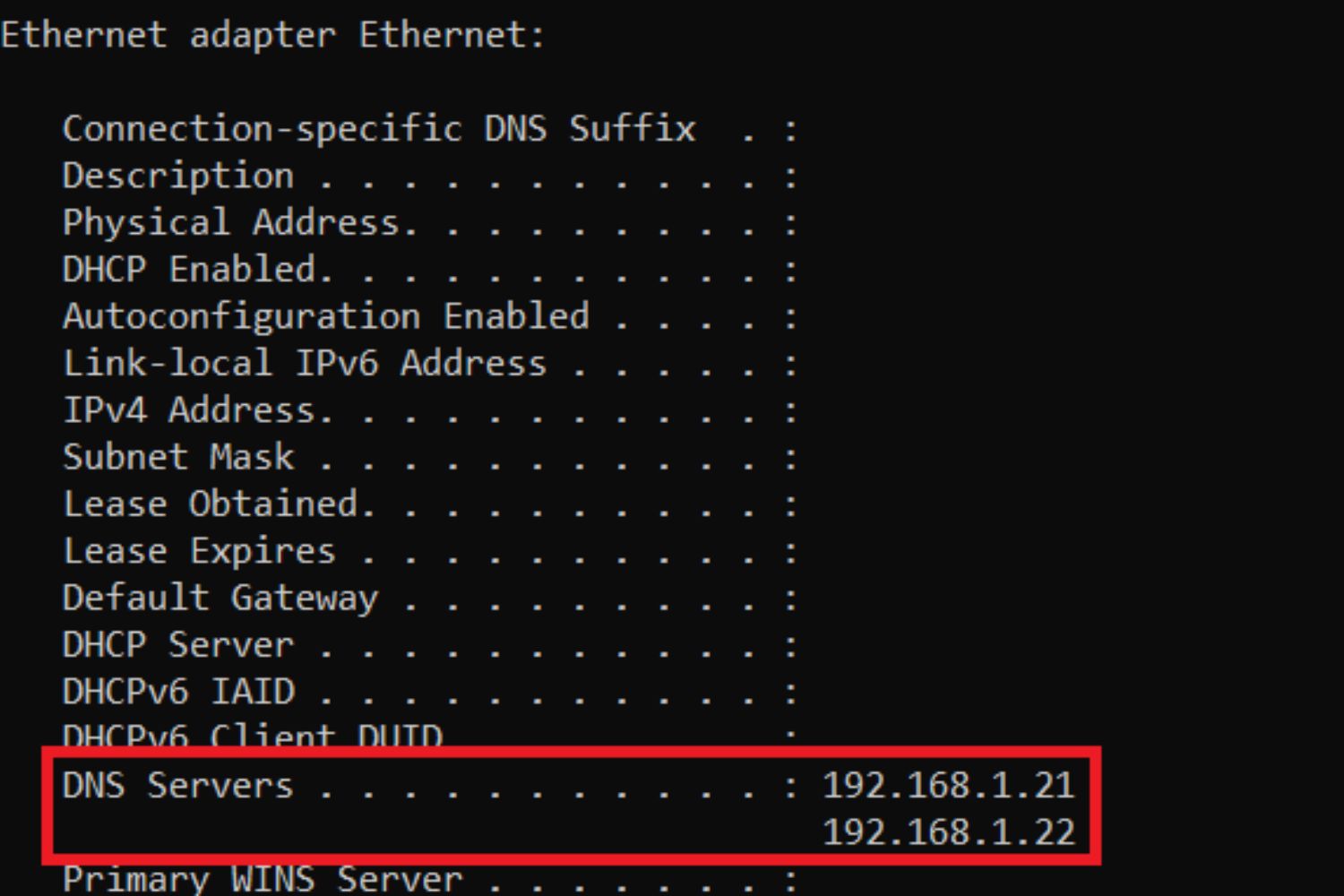Introduction
Welcome to the world of the internet, where billions of devices are connected and communicate with each other. At the heart of this interconnectedness lies the Internet Protocol (IP), a fundamental technology that enables data transmission across networks. Whether you’re browsing the web, sending emails, or streaming videos, the IP protocol is working silently in the background to ensure the smooth flow of information.
So, what exactly is an Internet Protocol (IP)? In simple terms, it is a set of rules that governs how data is sent and received over the internet. Just as postal addresses are used to identify the location of a physical mailbox, IP addresses are used to identify and route data packets to their intended destinations in the digital world.
Think of IP addresses as the virtual “homes” of devices connected to the internet. Each device, whether it’s a smartphone, computer, or a web server, is assigned a unique IP address. This address serves as its digital identity, allowing it to send and receive data from other devices on the internet. Without IP addresses, devices would be unable to communicate with each other, and the internet as we know it would not exist.
With the increasing number of internet users and connected devices, IP addresses have become a valuable and finite resource. To accommodate this growing demand, two versions of IP addresses exist: IPv4 (Internet Protocol version 4) and IPv6 (Internet Protocol version 6). We will explore the differences and implications of these versions later in this article.
Understanding how IP addresses work and the intricacies of the IP protocol is crucial, whether you’re a tech enthusiast, a network administrator, or simply someone who wants to gain a deeper understanding of the internet. In the following sections, we will delve into the foundations of the IP protocol, its role in network communication, and various aspects related to IP address allocation, routing, and security.
What Is an Internet Protocol (IP)?
An Internet Protocol (IP) is a set of rules that governs how data is transmitted over networks. It provides a standardized way for devices connected to the internet to communicate with each other. Just like how people need a language to understand and exchange information, devices need a protocol like IP to facilitate the transfer of data.
The IP protocol operates at the network layer of the Internet Protocol Suite, also known as the TCP/IP model. It establishes the rules and procedures for addressing, routing, and fragmenting data packets, ensuring that they reach their intended destinations across different networks.
The core function of IP is to assign a unique numerical identifier, known as an IP address, to each device connected to a network. An IP address consists of a series of numbers separated by dots (e.g., 192.168.0.1). By using IP addresses, devices can send and receive data packets, which are chunks of information, to and from other devices on the internet.
IP has two versions: IPv4 and IPv6. IPv4 is the older version and is still widely used. It uses a 32-bit address format and provides approximately 4.3 billion unique IP addresses. However, with the exponential growth of internet-connected devices, the limitations of IPv4 became apparent, leading to the development of IPv6. IPv6 uses a 128-bit address format, allowing for a significantly larger number of IP addresses.
Besides IP addresses, the protocol also defines other important features, such as IP header, which carries information like source and destination IP addresses, the type of service, and the time-to-live (TTL) of the packet. The header allows routers to route the packets accurately and efficiently.
Overall, the Internet Protocol (IP) is the cornerstone of global network communication. It enables devices to establish connections, exchange data, and participate in the vast ecosystem of the internet. Without the IP protocol, the seamless transfer of data across networks would not be possible.
How Does an IP Address Work?
An IP address plays a vital role in the functioning of the Internet Protocol (IP) as it serves as a unique identifier for devices connected to a network. Similar to how a phone number allows you to make calls to a specific individual, an IP address enables devices to send and receive data to and from specific destinations on the internet.
IP addresses consist of a series of numerical values separated by dots, and they come in two versions: IPv4 and IPv6. IPv4 addresses are represented in a 32-bit format, while IPv6 addresses are 128-bits long. One important distinction between these versions is that IPv4 addresses are more commonly used, while IPv6 addresses offer a much larger pool of available addresses to accommodate the growing number of internet-connected devices.
When a device wants to send data to another device, it needs to know the destination’s IP address. This address acts as the digital “location” where the data should be delivered. Just like how a postal service routes mail based on the recipient’s physical address, routers on the internet examine the IP address to determine the most efficient path for sending data packets.
IP addresses are not randomly assigned; they are allocated and managed by organizations such as Internet Assigned Numbers Authority (IANA) and regional internet registries. These organizations ensure that IP addresses are distributed in a controlled and coordinated manner to avoid conflicts and ensure the scalability of the internet.
Every device connected to a network, whether it’s a computer, smartphone, or a web server, is assigned a unique IP address. This address can be either dynamic or static. Dynamic IP addresses are assigned temporarily and might change over time, while static IP addresses are manually assigned and remain constant.
Now, let’s take a simple example of how an IP address works. When you type a website URL in your browser’s address bar and hit enter, your device sends a request to the server hosting the website. To deliver the response, the server needs to know the IP address of your device. Your IP address is included in the request, acting as the return address for the server to send the data back to your device.
Once the server receives your request and knows your IP address, it sends the requested information back to your device, which computer routers on the internet route based on the destination IP address. This process enables seamless data transfer between devices across networks.
In summary, an IP address serves as a unique identifier for devices connected to a network and allows data to be sent and received accurately. It plays a crucial role in data transmission, routing, and enabling effective communication between devices on the internet.
Types of IP Addresses
IP addresses come in different types, each serving a specific purpose in network communication. These types of addresses are classified based on their intended use and scope within a network.
1. Public IP Addresses: A public IP address is globally unique and accessible on the internet. Internet Service Providers (ISPs) assign public IP addresses to devices connected to their networks, allowing them to communicate with other devices and services across the internet. Websites, email servers, and game servers typically have public IP addresses to facilitate communication with clients from different networks.
2. Private IP Addresses: Private IP addresses are used within local networks and are not accessible directly from the internet. These addresses are reserved for internal use to assign unique identifiers to devices within a network, such as computers, smartphones, or devices connected to a home router. Private IP addresses fall within certain reserved ranges defined by Internet Engineering Task Force (IETF) standards, such as the widely used RFC 1918 ranges (e.g., 192.168.0.0 – 192.168.255.255).
3. Static IP Addresses: A static IP address is manually assigned to a device and remains constant over time. It does not change, even if the device restarts or reconnects to the network. Static IP addresses are often used for devices that require permanent accessibility, such as servers, routers, or network devices that need remote access.
4. Dynamic IP Addresses: Dynamic IP addresses are automatically assigned to devices by the network’s DHCP (Dynamic Host Configuration Protocol) server. These addresses are temporary and subject to change over time. When a device connects to a network, the DHCP server dynamically assigns an available IP address from a pool of addresses. Dynamic IP addresses are commonly used for devices like personal computers or smartphones that don’t require constant accessibility from the outside network.
5. Reserved IP Addresses: There are specific IP addresses reserved for special purposes or protocols. For example, the loopback address (127.0.0.1) is reserved for a device to refer to itself for testing or local network communication. Additionally, multicast addresses (ranging from 224.0.0.0 to 239.255.255.255) are reserved for multicast communication, where data is sent to a specific group of devices rather than a single destination.
Understanding the different types of IP addresses is crucial for network administrators, system architects, and anyone managing network infrastructure. By knowing the purpose and characteristics of each type, they can effectively configure and manage IP addressing schemes within their networks.
IPv4 vs. IPv6
IPv4 (Internet Protocol version 4) and IPv6 (Internet Protocol version 6) are two different versions of the Internet Protocol that provide addressing and routing capabilities for devices connected to the internet. While IPv4 has been around for several decades and is still widely used, IPv6 was developed to address the limitations and address exhaustion issues faced by IPv4.
IPv4 is based on a 32-bit address format, allowing for approximately 4.3 billion unique IP addresses. However, with the exponential growth of internet-connected devices, the demand for IP addresses rapidly increased, causing IPv4 address exhaustion. This scarcity led to the development of IPv6.
IPv6 uses a 128-bit address format, providing an almost infinite pool of IP addresses. It allows for approximately 340 undecillion (3.4 x 10^38) unique addresses, ensuring that the growing number of devices can be assigned unique identifiers. This abundance of addresses eliminates the need for techniques like Network Address Translation (NAT) used in IPv4 to conserve IP addresses.
In addition to the increased address space, IPv6 brings several other improvements compared to IPv4. One notable enhancement is the simplified header format of IPv6, which reduces the processing overhead for routers and devices. IPv6 also incorporates built-in support for features like auto-configuration, improved security through IPsec (Internet Protocol Security), and better support for multicast communication.
Despite the advantages of IPv6, the adoption has been relatively slow. One reason for this is the compatibility issue between IPv4 and IPv6. Since the two protocols are not directly interoperable, transitioning from IPv4 to IPv6 requires careful planning and implementation. Many networks and devices are still predominantly IPv4-based, requiring support for both IPv4 and IPv6 in the transitional phase.
To promote the adoption of IPv6, efforts have been made to encourage IPv6 readiness in network infrastructure, operating systems, and internet services. Additionally, there are transition mechanisms, such as dual-stack deployment, tunnelling, and translation, which allow IPv6 and IPv4 networks to coexist and interoperate until full IPv6 deployment is achieved.
Gradually, with the depletion of available IPv4 addresses and the increasing need for more devices to connect to the internet, transitioning to IPv6 is becoming a necessity. The widespread adoption of IPv6 is a crucial step in ensuring the continued growth and functionality of the internet.
The Role of IP in Network Communication
The Internet Protocol (IP) plays a pivotal role in network communication by facilitating the transfer of data between devices connected to the internet or any other network. IP provides a standardized set of rules and procedures for addressing, routing, and fragmenting data packets, ensuring that they reach their intended destinations.
At its core, IP ensures that data is transmitted reliably and efficiently across networks. When a device wants to send data to another device, IP breaks the data into smaller packets, assigns these packets a source and destination IP address, and adds additional information in the packet header. This information includes the type of service, packet length, and other control information necessary for proper delivery.
Once the packets are ready, the IP protocol takes over and forwards them through the network. Each packet is examined and routed by routers along the transmission path based on the destination IP address. These routers use routing tables to determine the best path for each packet, ensuring that the data reaches its intended recipient in the most efficient way possible.
In addition to routing, IP also handles the reassembly of fragmented packets. Sometimes, due to various factors like network congestion or data transmission limitations, packets may be fragmented into smaller pieces. IP ensures that these fragmented packets are reassembled correctly at the destination device, guaranteeing the integrity and completeness of the original data.
While IP operates at the network layer of the TCP/IP model, it relies on other protocols from the TCP/IP suite to establish end-to-end communication. For example, TCP (Transmission Control Protocol) is responsible for ensuring reliable delivery of data by assigning sequence numbers and managing acknowledgments, while UDP (User Datagram Protocol) provides a simpler, connectionless communication method without reliability guarantees.
IP also interacts with higher-level protocols like HTTP (Hypertext Transfer Protocol), SMTP (Simple Mail Transfer Protocol), or FTP (File Transfer Protocol). These application-layer protocols rely on IP to transport their data across networks, allowing users to browse websites, send emails, transfer files, and participate in various online activities.
Overall, the IP protocol plays a crucial role in network communication by providing the necessary infrastructure and mechanisms to ensure the seamless flow of data between devices. It enables the internet to function as the global network of networks, connecting billions of devices and facilitating an endless array of services and applications that have become an integral part of our daily lives.
The Different Layers of the TCP/IP Protocol Suite
The TCP/IP protocol suite is a comprehensive set of protocols that governs network communication on the internet and most modern networks. It is organized into several layers, each responsible for specific tasks and functionalities. Understanding these layers is essential to comprehend how data is transmitted and received across networks.
1. Application Layer: The topmost layer is the application layer, which includes protocols like HTTP, FTP, SMTP, and DNS. This layer deals with high-level application-specific protocols that enable user interactions with network services, such as web browsing, email communication, and file transfers.
2. Transport Layer: The transport layer is responsible for end-to-end communication and ensures reliable data delivery. The two most common transport layer protocols are TCP and UDP. TCP guarantees reliable and ordered transmission of data, while UDP provides a simpler, connectionless protocol for faster transmission without reliability guarantees.
3. Internet Layer (IP): The internet layer is where the IP protocol operates. It handles the routing and delivery of data packets across networks. IP assigns unique IP addresses to devices and defines how packets are addressed, fragmented, and routed to their destination across different networks.
4. Network Interface Layer: Also known as the data link layer or link layer, this layer is responsible for the physical transmission of data on a particular network medium. It defines protocols to encapsulate IP packets into frames suitable for transmission over specific physical media, such as Ethernet or Wi-Fi.
Each layer in the TCP/IP protocol suite performs specific tasks and relies on the layer above or below it to complete the communication process. Data passes down through the protocol stack at the sender, where each layer adds its own information and encapsulates the data into a specific format. At the receiver, the data goes up the stack, with each layer responsible for processing and extracting the relevant information.
The TCP/IP protocol suite is based on a flexible and modular design, allowing for interoperability and scalability across different networks. It has become the de facto standard for network communication, enabling devices and services to seamlessly interact and exchange information over the internet.
By understanding the different layers of the TCP/IP protocol suite, network administrators and engineers can troubleshoot network issues, design efficient network architectures, and ensure the reliable and secure transmission of data across networks.
IP Routing and Packet Forwarding
IP routing is a fundamental process in the Internet Protocol (IP) that determines the path for data packets to travel from a source device to a destination device across networks. It involves making decisions on the most efficient route to take based on routing tables and forwarding the packets along the chosen path.
When a device sends a data packet, the source IP address and destination IP address are included in the packet header. Routers along the transmission path examine these addresses to determine the next hop or the next router to which the packet should be forwarded. This decision is based on the routing tables, which contain information about network topologies and available routes.
Routing tables store information about networks and their associated next hops in terms of IP addresses. Each router maintains its own routing table, which is continuously updated to reflect changes in network connectivity and availability of routes. These tables are built through various mechanisms like static routing, where routes are manually configured, or dynamic routing protocols, where routers exchange routing information to build and update routing tables automatically.
When a packet arrives at a router, the router examines the destination IP address and consults its routing table. Based on the longest matching network prefix, the router determines the appropriate next hop for the packet and forwards it accordingly. This process is repeated at each intermediate router until the packet reaches its final destination.
Packet forwarding is the actual movement of the data packets from one router to another along the chosen path. Once a router determines the next hop for a packet, it encapsulates the packet into a new frame suitable for transmission over the outgoing interface. The frame is then sent out to the next router in the path, where the process is repeated until the packet reaches the destination device.
Efficient routing and packet forwarding are crucial for optimal data transmission and network performance. Routers are responsible for dynamically adapting to network changes, such as outages, congestion, or changes in network topology, by recalculating and updating the routing tables. This ensures that packets take the most efficient paths and avoid network bottlenecks.
Within the IP protocol, numerous routing protocols are employed, such as Border Gateway Protocol (BGP) for interdomain routing and Open Shortest Path First (OSPF) for intra-domain routing. Each routing protocol has its own mechanisms and algorithms for exchanging and calculating routes, providing flexibility and scalability in complex networks.
In summary, IP routing and packet forwarding play a crucial role in determining the path for data packets to travel across networks. Routers use routing tables to make decisions on the most efficient route based on destination IP addresses, while packet forwarding ensures the movement of packets from one router to another along the chosen path. Effective routing and forwarding mechanisms contribute to network efficiency, scalability, and reliable data transmission.
IP Address Allocation and Management
IP address allocation and management are essential processes in ensuring the efficient and effective use of IP addresses on the internet. With the growing number of internet-connected devices, proper allocation and management practices are crucial to prevent address exhaustion and ensure the smooth functioning of the internet.
IP addresses are allocated by organizations responsible for managing IP address resources. Internet Assigned Numbers Authority (IANA) oversees the global allocation of IP addresses. It distributes IP address blocks to regional internet registries (RIRs), such as the American Registry for Internet Numbers (ARIN), RIPE Network Coordination Centre (RIPE NCC), and Asia Pacific Network Information Centre (APNIC), which further allocate addresses to internet service providers (ISPs), enterprises, and other organizations.
The allocation of IP addresses follows specific guidelines and policies set by these organizations. IP address blocks are assigned based on the needs and requirements of the requester, considering factors such as the number of devices, network infrastructure, and growth projections.
The management of IP addresses involves tracking and maintaining records of allocated IP addresses to ensure their efficient utilization. This includes keeping records of which organization or entity holds a specific IP address block and managing the assignment of address blocks to ISPs or large organizations.
One common practice for IP address management is the use of hierarchical addressing. IP address space is divided into smaller, more manageable blocks, allowing efficient allocation and routing. This hierarchical structure enables efficient routing by aggregating smaller address blocks into larger ones, minimizing the number of routing table entries and reducing network complexity.
In addition to allocation and management, IP address management also involves monitoring and addressing issues related to IP address exhaustion. With the limited availability of IPv4 addresses, techniques such as Network Address Translation (NAT) and Classless Inter-Domain Routing (CIDR) have been adopted to extend the lifespan of IPv4 addresses.
As the demand for IP addresses continues to grow, the transition to IPv6 has become increasingly significant. IPv6 provides a large address space to accommodate the increasing number of devices. Proper management practices are crucial to encourage the adoption and smooth deployment of IPv6, ensuring a seamless transition from IPv4 to future-proof addressing solutions.
In summary, IP address allocation and management are critical processes that ensure the efficient use of IP address resources and the stability of the internet. Organizations responsible for allocation and management play a pivotal role in maintaining the integrity and sustainability of IP address space, while also adapting to emerging IP addressing technologies and practices.
Security Considerations with IP
While the Internet Protocol (IP) is instrumental in facilitating network communication, it also poses various security considerations that need to be addressed to protect data and ensure the integrity of network connections. Understanding and implementing security measures is crucial in safeguarding sensitive information and mitigating potential threats.
1. IP Spoofing: IP spoofing is a technique where an attacker forges the source IP address of a packet to appear as if it originates from a trusted source. This can be used to bypass security measures, conduct unauthorized activities, or launch various attacks. Implementing measures like ingress and egress filtering, where incoming and outgoing packets are scrutinized and filtered based on their source and destination IP addresses, can help prevent IP spoofing.
2. IP Address Scanning and Enumeration: Attackers often scan networks for available hosts and IP addresses to identify potential targets. Implementing network security measures like firewalls and intrusion detection systems can identify and block scanning attempts, limiting the exposure of vulnerable systems.
3. Denial-of-Service (DoS) Attacks: DoS attacks aim to overwhelm a target system or network with an excessive amount of traffic, rendering it inaccessible to legitimate users. IP-based DoS attacks, such as SYN flooding or ICMP flooding, exploit vulnerabilities in the IP protocol. Implementing techniques like rate limiting, traffic filtering, and DoS prevention mechanisms can help mitigate the impact of such attacks.
4. IPsec (IP Security) Protocols: IPsec provides secure communication over IP networks by encrypting and authenticating IP packets. IPsec protocols like Encapsulating Security Payload (ESP) and Authentication Header (AH) add layers of security to IP-based communications, ensuring confidentiality and integrity of data.
5. IP Blacklisting and Whitelisting: Organizations can employ IP blacklisting to block or restrict access from known malicious IP addresses or suspicious sources. Conversely, IP whitelisting allows only authorized IP addresses to access specific resources, minimizing the attack surface.
6. Network Address Translation (NAT): NAT is commonly used to translate private IP addresses into public IP addresses, providing a level of protection by hiding the internal network structure from external entities. NAT helps in preventing direct attacks on internal devices by taking advantage of the limited number of available public IP addresses.
7. IP Packet Filtering: Firewalls and routers can be configured to filter IP packets based on specific criteria, such as source or destination IP addresses, ports, or protocols. This helps enforce access control policies, detect and prevent unauthorized access, and protect against various network-based attacks.
8. IPv6 Security Considerations: With the adoption of IPv6, new security considerations have emerged. IPv6 introduces new vulnerabilities and potential attack vectors that organizations need to address. Proper configuration and monitoring of IPv6-related security mechanisms, such as IPsec, router advertisements, and neighbor discovery protocols, are crucial to ensure IPv6 network security.
In summary, IP introduces security challenges that need to be addressed for a secure and robust network environment. Implementing a combination of measures such as ingress/egress filtering, IPsec, firewalls, DoS prevention mechanisms, and IP blacklisting/whitelisting can enhance network security and protect against various IP-based threats.
Conclusion
The Internet Protocol (IP) is a vital technology that underpins network communication on the internet and other networks. It provides a standardized set of rules and procedures for addressing, routing, and transmitting data packets, enabling devices to communicate and exchange information across diverse networks.
Throughout this article, we explored various aspects of IP, including its definition, the different types of IP addresses, the transition from IPv4 to IPv6, the role of IP in network communication, the different layers of the TCP/IP protocol suite, IP routing and packet forwarding, IP address allocation and management, and security considerations with IP.
IP addresses serve as unique identifiers for devices, allowing them to send and receive data across networks. The transition from IPv4 to IPv6 is witnessing a shift towards a larger pool of IP addresses to accommodate the growing number of connected devices. Understanding IP routing and packet forwarding is crucial for efficient data transmission, while proper IP address allocation and management help prevent address exhaustion and ensure optimal utilization of resources.
The layers of the TCP/IP protocol suite work together to facilitate network communication, with IP being a core component responsible for addressing, routing, and fragmentation of data packets. Security considerations with IP involve protecting against various threats, such as IP spoofing, DoS attacks, and ensuring secure communication with protocols like IPsec.
In conclusion, the Internet Protocol (IP) plays a crucial role in enabling network communication and data transmission across the internet and other networks. Understanding the principles, mechanisms, and considerations associated with IP is essential for network administrators, engineers, and users to ensure efficient and secure connectivity in the digital world.









